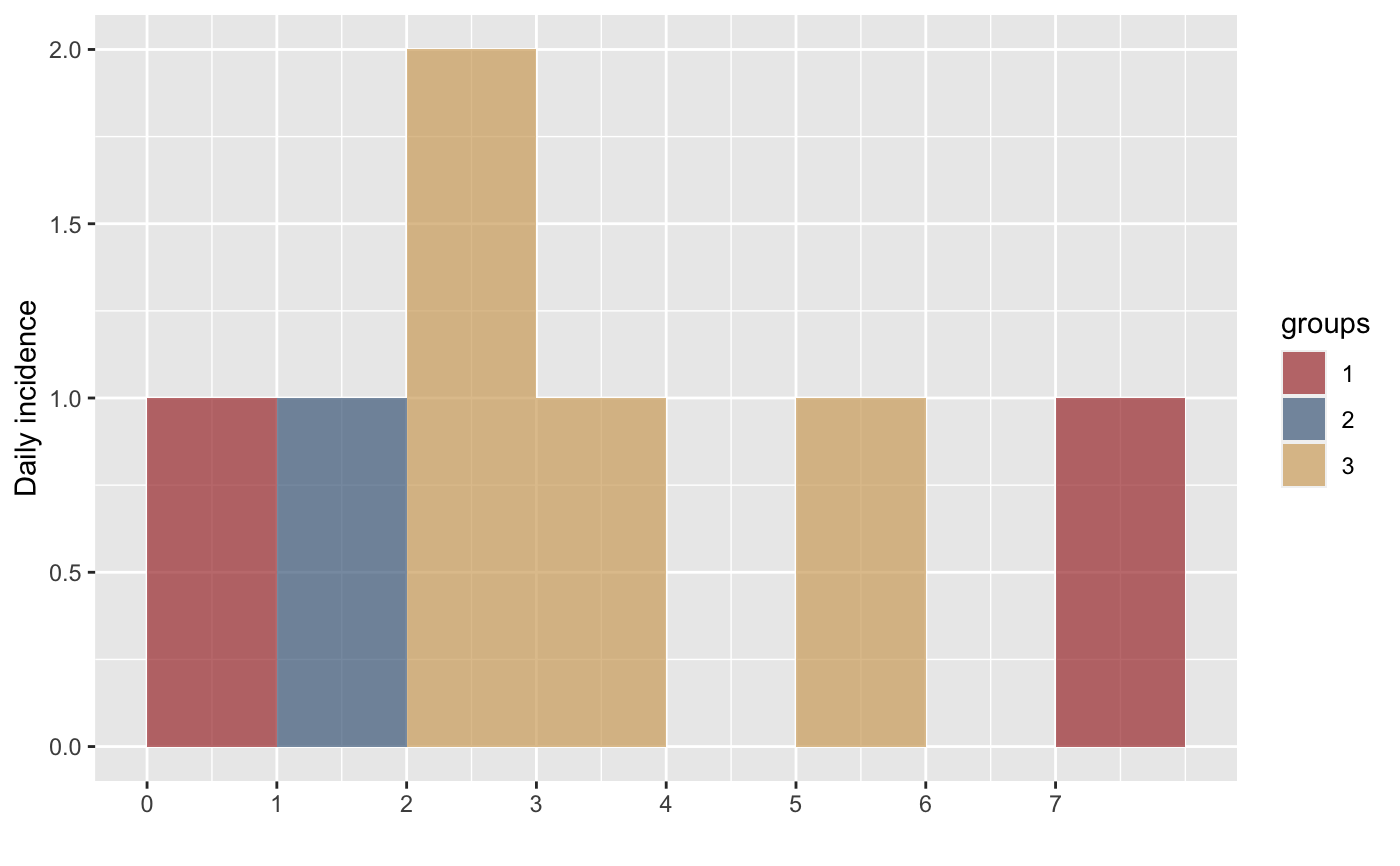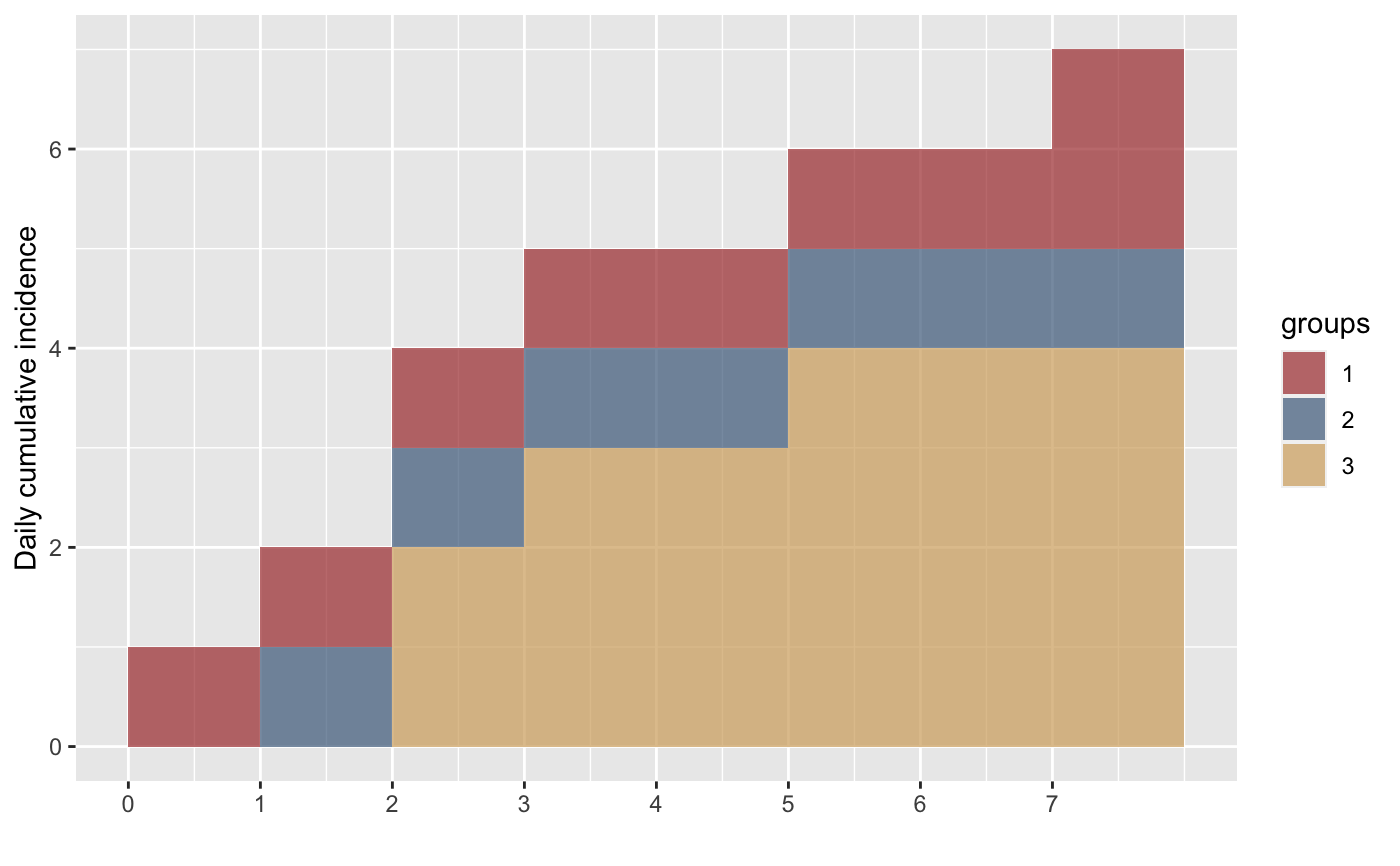cumulate is an S3 generic to compute cumulative numbers, with methods
for different types of objects:
cumulate(x)
# Default S3 method
cumulate(x)
# S3 method for class 'incidence'
cumulate(x)Details
default method is a wrapper for
cumsumincidenceobjects: computes cumulative incidence over timeprojectionsobjects: same, forprojectionsobjects, implemented in the similarly named package; see?cumulate.projectionsfor more information, after loading the package
See also
The incidence() function to generate the 'incidence'
objects.
Examples
dat <- as.integer(c(0,1,2,2,3,5,7))
group <- factor(c(1, 2, 3, 3, 3, 3, 1))
i <- incidence(dat, groups = group)
i
#> <incidence object>
#> [7 cases from days 0 to 7]
#> [3 groups: 1, 2, 3]
#>
#> $counts: matrix with 8 rows and 3 columns
#> $n: 7 cases in total
#> $dates: 8 dates marking the left-side of bins
#> $interval: 1 day
#> $timespan: 8 days
#> $cumulative: FALSE
#>
plot(i)
 i_cum <- cumulate(i)
i_cum
#> <incidence object>
#> [7 cases from days 0 to 7]
#> [3 groups: 1, 2, 3]
#>
#> $counts: matrix with 8 rows and 3 columns
#> $n: 7 cases in total
#> $dates: 8 dates marking the left-side of bins
#> $interval: 1 day
#> $timespan: 8 days
#> $cumulative: TRUE
#>
plot(i_cum)
i_cum <- cumulate(i)
i_cum
#> <incidence object>
#> [7 cases from days 0 to 7]
#> [3 groups: 1, 2, 3]
#>
#> $counts: matrix with 8 rows and 3 columns
#> $n: 7 cases in total
#> $dates: 8 dates marking the left-side of bins
#> $interval: 1 day
#> $timespan: 8 days
#> $cumulative: TRUE
#>
plot(i_cum)
